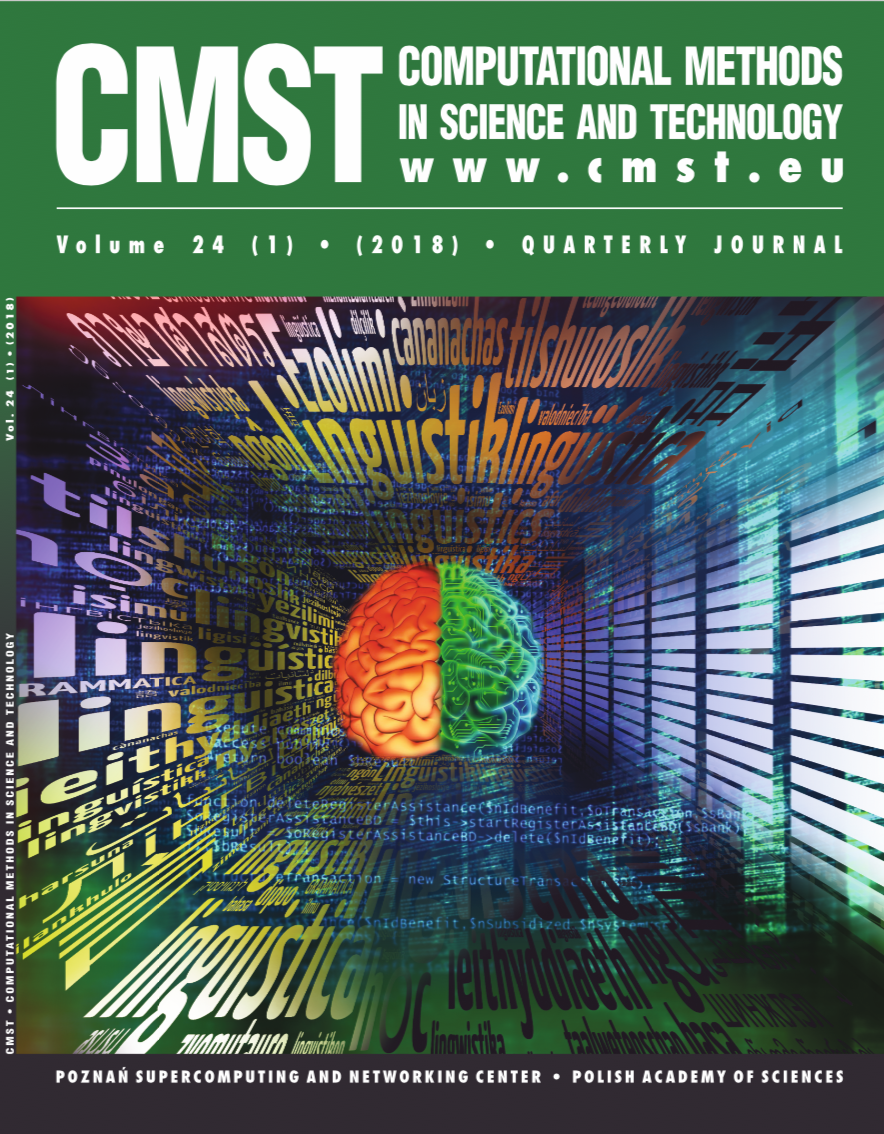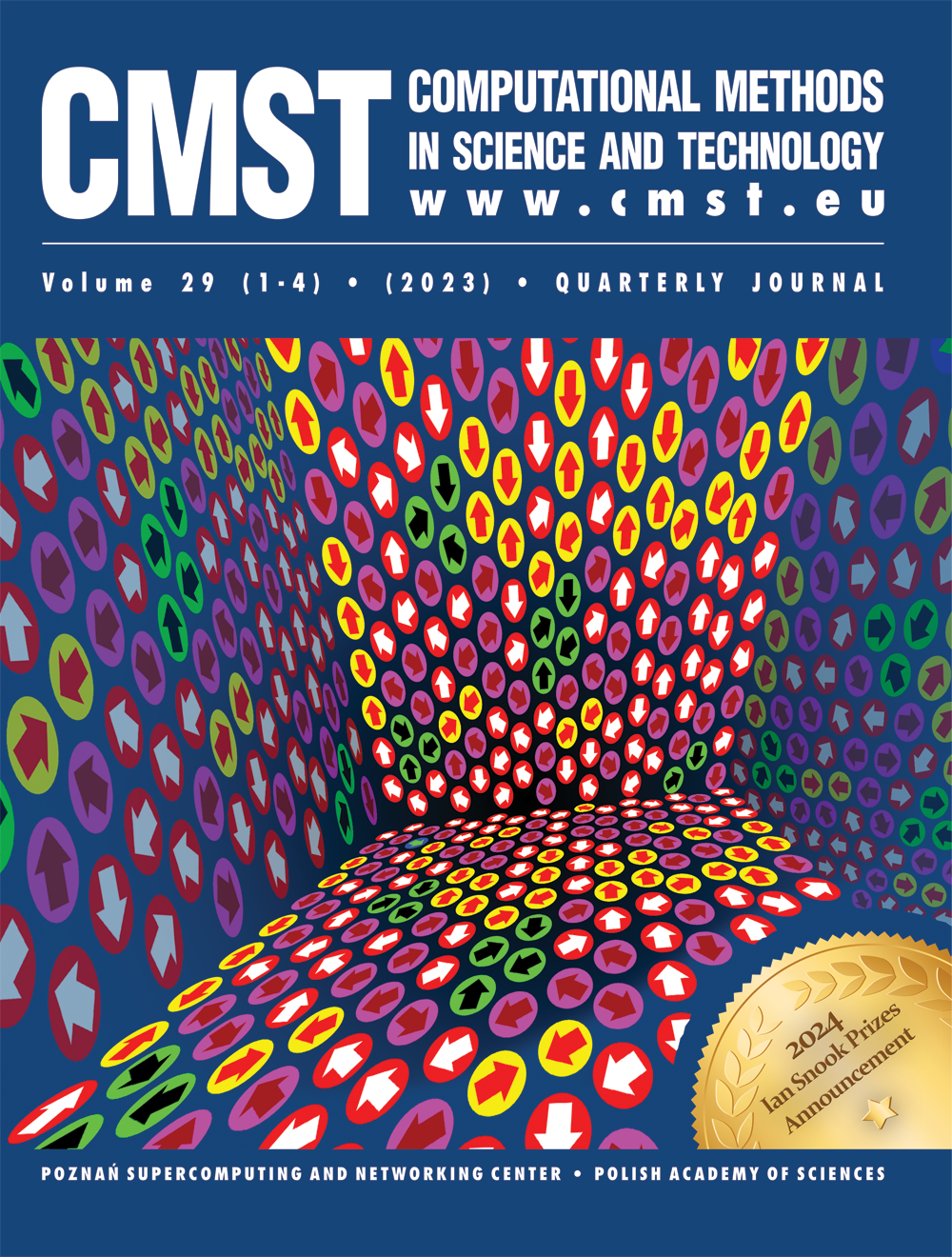LONG-TAIL FEATURE OF DNA WORDS OVER- AND UNDER-REPRESENTATION IN CODING SEQUENCES
Nowicka Aleksandra 1, Dudek Mirosław R. 2, Cebrat Stanisław 1, Kowalczuk Maria 1, Mackiewicz Paweł 1, Dudkiewicz Małgorzata 1, Szczepanik D. 1
1 Institute of Microbiology, University of Wroclaw
ul. Przybyszewskiego 63/77, 54-148 Wrocław, Poland
2 Institute of Physics, Pedagogical University
65-069 Zielona Góra, Poland
DOI: 10.12921/cmst.2000.06.01.65-71
OAI: oai:lib.psnc.pl:510
Abstract:
We have analyzed DNA sequences of known genes from 16 yeast chromosomes (Saccharomyces cerevisiae) in terms of oligonucleotides. We have noticed that the relative abundances of oligonucleotide usage in the genome follow a long-tail Lévy-like distribution. We have observed that long genes often use strongly over-represented and under-represented nucleotides, whereas it was not the case for the short genes (shorter than 300 nucleotides) under consideration. If selection on the extremely over-represented/under-represented oligonucleotides was strong, long genes would be more affected by spontaneous mutations
than short ones.
References:
[1] W. Li, Int. J. Bifurc. Chaos, 2, 137-154 (1992).
[2] W. Li, K. Kaneko, Europhys. Lett., 17, 655-660 (1992).
[3] C. -K. Peng, S. V. Buldyrev, A. L. Goldberger, S. Havlin, F. Sciortino, M. Simons, H.E. Stanley,
Nature, 356, 168-170 (1992).
[4] R. Voss, Phys. Rev. Lett., 68, 3805-3808 (1992).
[5] H. E. Stanley, S. V. Buldyrev, A. L. Goldberger, S. Havlin, C. -K. Peng, M. Simons, Physica, A273, 1-18 (1999).
[6] A. Arnéodo, Y. d’Aubenton-Carafa, B. Audit, E. Bacry, J. F. Muzy, C. Thermes, Eur. Phys. J., Bl, 259-263 (1998).
[7] M. de Sousa Viera, Phys. Rev., E60, 5932-5937 (1999).
[8] S. Cebrat, M. R. Dudek, A. Gierlik, M. Kowalczuk, P. Mackiewicz, Physica, A265, 78-84 (1999).
[9] P. Mackiewicz, A. Gierlik, M. Kowalczuk, D. Szczepanik, M. R. Dudek, S. Cebrat, Physica, A273, 103-115 (1999).
[10] P. Mackiewicz, A. Gierlik, M. Kowalczuk, M. R. Dudek, S. Cebrat, Genome Res., 9, 409-416
(1999).
[11] W. Ebeling, T. Poshel, Europhys. Lett., 26, 241 (1994).
[12] R. N. Mantegna, S. V. Buldyrev, A. L. Goldberger, S. Havlin, C. -K. Peng, M. Simons, H. E.
Stanley, Phys. Rev. Lett., 23, 3169-3172 (1994).
[13] M. Halibard, I. Kanter, Physica, A249, 525-535 (1998).
[14] N. Vandewalle, M. Ausloas, Physica, A268, 240-249 (1999).
[15] M. Ausloos, K. Ivanova, Physica, A270, 526-542 (1999).
[16] S. V. Buldyrev, A. L. Goldberger, S. Havlin, R. N. Mantegna, M. E. Matsa, C. -K. Peng, M. Simons, H. E. Stanley, Phys. Rev., E51, 5084 (1995).
[17] H. Herzel, O. Weiss, E. N. Trifonov, Bioinformatics, 15, 187 (1999).
[18] S. Cebrat, M. R. Dudek, P. Mackiewicz, M. Kowalczuk, M. Fita, Microb. Comp. Genom., 2,
259-268 (1997).
[19] E. N. Trifonov, Physica, A249, 511-516 (1998).
[20] A. Gierlik, P. Mackiewicz, M. Kowalczuk, S. Cebrat, M. R. Dudek, Int. J. Mod. Phys., C10, 1-9
(1999).
[21] S. Karlin, Ch. Burge, Trends Genet., 11, 283-290 (1995).
[22] S. Karlin, J. Mrràzek, A. M. Campbell, J. Bacteriol., 179, 3899-3913 (1997).
[23] P. J. Deschavanne, A. Giron, J. Vilain, G. Fagot, B. Fertil, Mol. Biol. Evol., 16, 1391-1399 (1999).
[24] H. J. Jeffrey, Nuci. Acid. Res., 18, 2163-2170 (1990).
[25] M. Kowalczuk, A. Gierlik, P. Mackiewicz, S. Cebrat, M. R. Dudek, Physica, A273, 116-131 (1999).
[26] S. V. Buldyrev, N. V. Dokholyan, S. Havlin, H. E. Stanley, R. H. R. Stanley, Physica, A273, 19-32 (1999).
[27] G. Abramson, P. A. Alemany, H. A. Cerdeira, Phys. Rev., E58, 914-918 (1998).
[28] J. W. Drake et al., Nature, 221, 1128-1132 (1969).
We have analyzed DNA sequences of known genes from 16 yeast chromosomes (Saccharomyces cerevisiae) in terms of oligonucleotides. We have noticed that the relative abundances of oligonucleotide usage in the genome follow a long-tail Lévy-like distribution. We have observed that long genes often use strongly over-represented and under-represented nucleotides, whereas it was not the case for the short genes (shorter than 300 nucleotides) under consideration. If selection on the extremely over-represented/under-represented oligonucleotides was strong, long genes would be more affected by spontaneous mutations
than short ones.
[1] W. Li, Int. J. Bifurc. Chaos, 2, 137-154 (1992).
[2] W. Li, K. Kaneko, Europhys. Lett., 17, 655-660 (1992).
[3] C. -K. Peng, S. V. Buldyrev, A. L. Goldberger, S. Havlin, F. Sciortino, M. Simons, H.E. Stanley,
Nature, 356, 168-170 (1992).
[4] R. Voss, Phys. Rev. Lett., 68, 3805-3808 (1992).
[5] H. E. Stanley, S. V. Buldyrev, A. L. Goldberger, S. Havlin, C. -K. Peng, M. Simons, Physica, A273, 1-18 (1999).
[6] A. Arnéodo, Y. d’Aubenton-Carafa, B. Audit, E. Bacry, J. F. Muzy, C. Thermes, Eur. Phys. J., Bl, 259-263 (1998).
[7] M. de Sousa Viera, Phys. Rev., E60, 5932-5937 (1999).
[8] S. Cebrat, M. R. Dudek, A. Gierlik, M. Kowalczuk, P. Mackiewicz, Physica, A265, 78-84 (1999).
[9] P. Mackiewicz, A. Gierlik, M. Kowalczuk, D. Szczepanik, M. R. Dudek, S. Cebrat, Physica, A273, 103-115 (1999).
[10] P. Mackiewicz, A. Gierlik, M. Kowalczuk, M. R. Dudek, S. Cebrat, Genome Res., 9, 409-416
(1999).
[11] W. Ebeling, T. Poshel, Europhys. Lett., 26, 241 (1994).
[12] R. N. Mantegna, S. V. Buldyrev, A. L. Goldberger, S. Havlin, C. -K. Peng, M. Simons, H. E.
Stanley, Phys. Rev. Lett., 23, 3169-3172 (1994).
[13] M. Halibard, I. Kanter, Physica, A249, 525-535 (1998).
[14] N. Vandewalle, M. Ausloas, Physica, A268, 240-249 (1999).
[15] M. Ausloos, K. Ivanova, Physica, A270, 526-542 (1999).
[16] S. V. Buldyrev, A. L. Goldberger, S. Havlin, R. N. Mantegna, M. E. Matsa, C. -K. Peng, M. Simons, H. E. Stanley, Phys. Rev., E51, 5084 (1995).
[17] H. Herzel, O. Weiss, E. N. Trifonov, Bioinformatics, 15, 187 (1999).
[18] S. Cebrat, M. R. Dudek, P. Mackiewicz, M. Kowalczuk, M. Fita, Microb. Comp. Genom., 2,
259-268 (1997).
[19] E. N. Trifonov, Physica, A249, 511-516 (1998).
[20] A. Gierlik, P. Mackiewicz, M. Kowalczuk, S. Cebrat, M. R. Dudek, Int. J. Mod. Phys., C10, 1-9
(1999).
[21] S. Karlin, Ch. Burge, Trends Genet., 11, 283-290 (1995).
[22] S. Karlin, J. Mrràzek, A. M. Campbell, J. Bacteriol., 179, 3899-3913 (1997).
[23] P. J. Deschavanne, A. Giron, J. Vilain, G. Fagot, B. Fertil, Mol. Biol. Evol., 16, 1391-1399 (1999).
[24] H. J. Jeffrey, Nuci. Acid. Res., 18, 2163-2170 (1990).
[25] M. Kowalczuk, A. Gierlik, P. Mackiewicz, S. Cebrat, M. R. Dudek, Physica, A273, 116-131 (1999).
[26] S. V. Buldyrev, N. V. Dokholyan, S. Havlin, H. E. Stanley, R. H. R. Stanley, Physica, A273, 19-32 (1999).
[27] G. Abramson, P. A. Alemany, H. A. Cerdeira, Phys. Rev., E58, 914-918 (1998).
[28] J. W. Drake et al., Nature, 221, 1128-1132 (1969).



